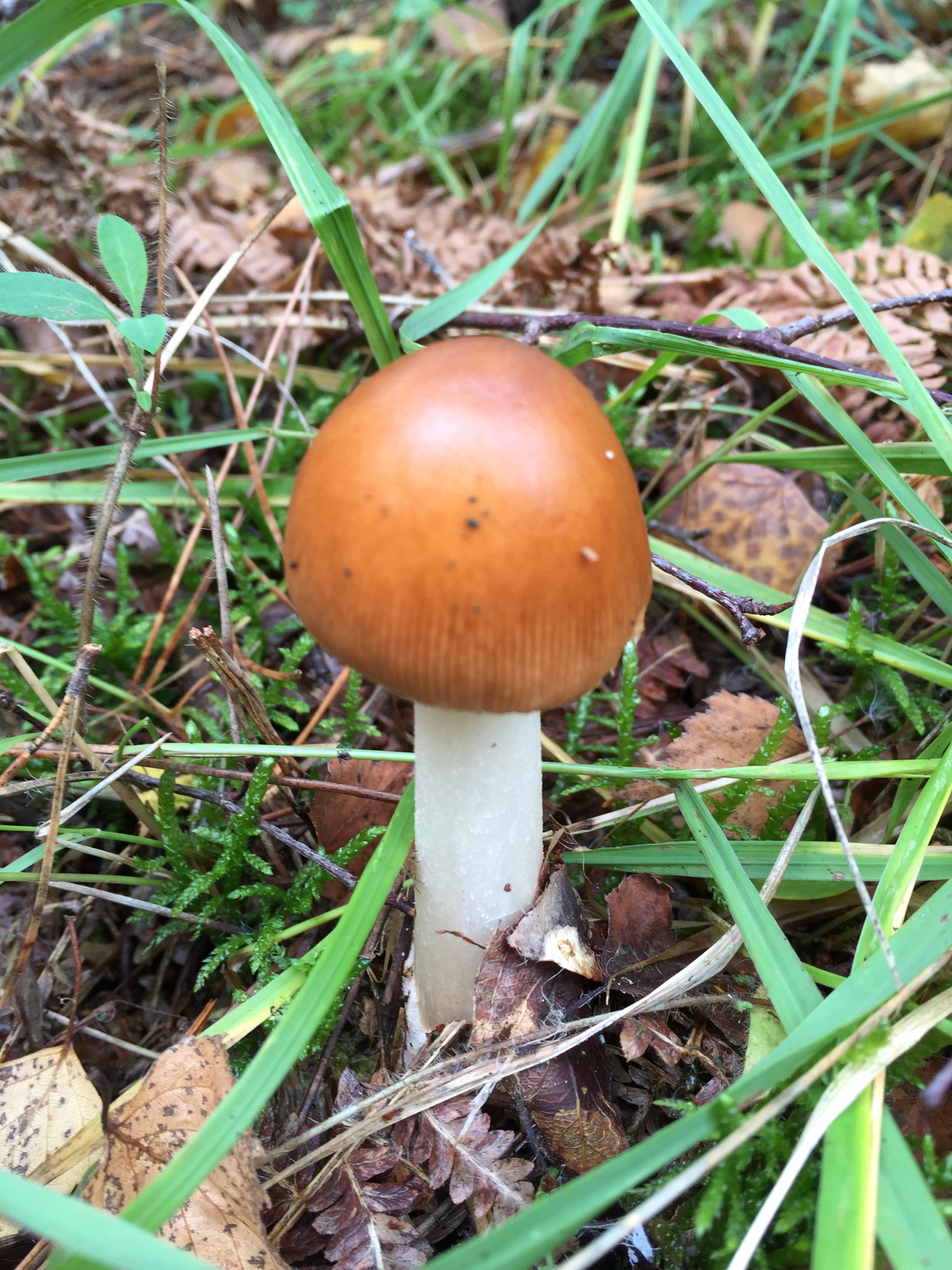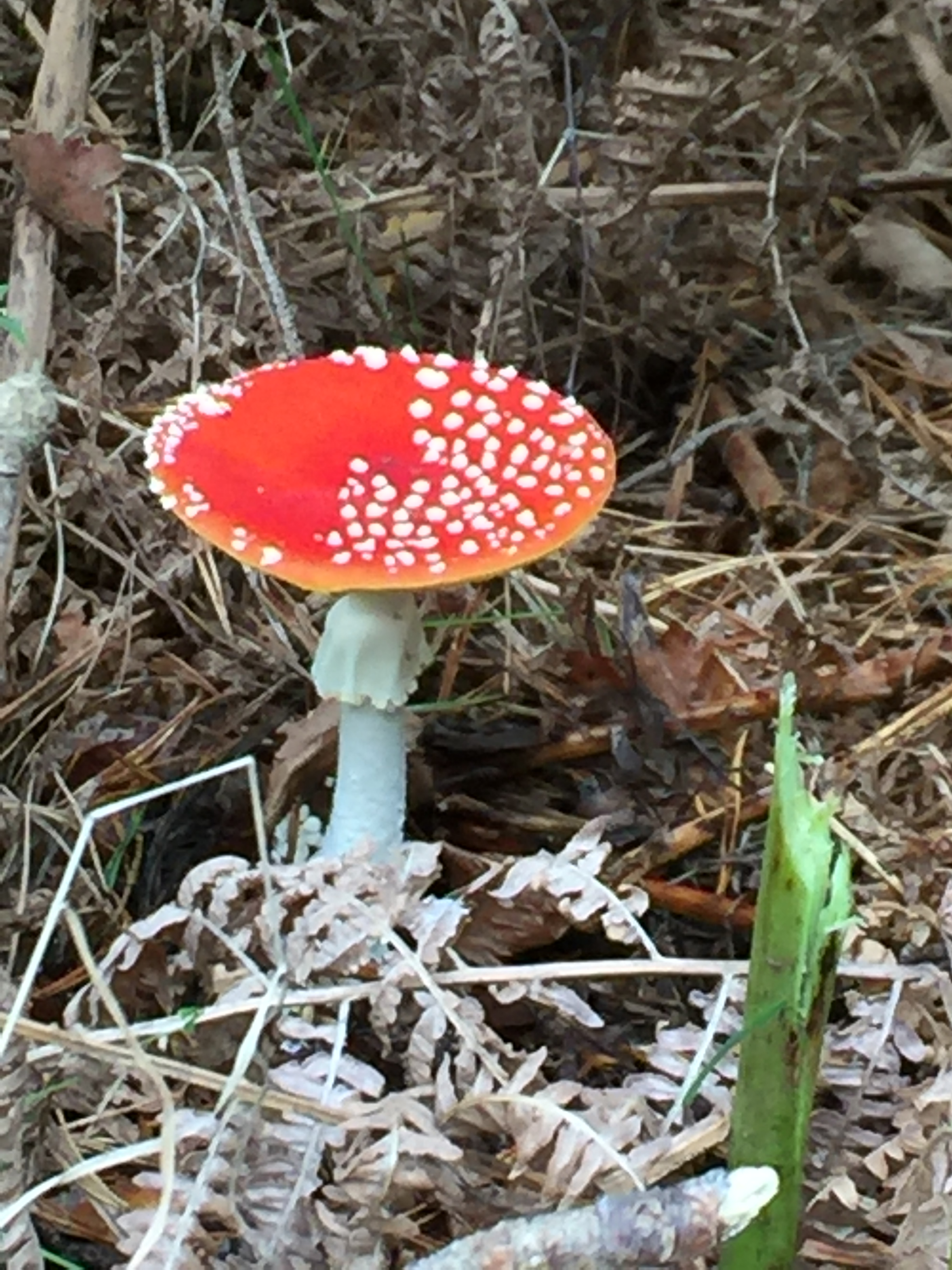No Ceps Please, We’re British!
The weather has definitely turned. Summer is over and autumn is well and truly upon us. I do like autumn. The trees are turning colour and provide us with some magnificent golden vistas. It is also the time to forage for the last of the sloes, nuts (if the squirrels haven’t already got to them!) and mushrooms. In the south of the UK we have had a reasonable amount of rain about a week ago, but now we have entered a dry, but cooler spell, the right sort of conditions for fungi.
I am only confident with a few species, so wouldn’t risk going out on my own to find new edible varieties. Even with a handful of mushroom identification books, the chances of mistaken identity can still be very high. When foraging, a fungi expert is not only highly recommended, it is essential. So on Saturday morning with wellies and warm clothing packed, drove deep into the New Forest to meet up with John Wright. John is a mycologist and familiar with all the UK laws regarding conservation, and works closely with organisations such as The New Forest Commission.

John doesn’t just specialise in fungi, he is most definitely what you would call a foraging enthusiast. Whether it is a hedgerow, the seashore or the forest floor, John can identify the tasty and good things that nature has to offer. Perhaps more importantly and this point is worth repeating, he can also identify the things that could give you an upset stomach or even a trip to hospital. In the worst case scenario, a one way ticket to hospital. The do not pass go, do not collect £100.00; go straight to meet your maker, type of ticket! Quite simply foraging foods that you are not 100% certain about is a game of Russian roulette.
Before we start our forage, John recommends having a foragers nip to get the day off to a good start. Now this is where his passion for hedgerow foraging comes into its own, as he makes some rather good hedgerow cocktails. From the boot of his car come out a couple of bottles of homemade infusions, one a raspberry & rosehip vodka and one a plum vodka. I opt for the plum and was pleased with my choice. The sharpness of the plum, cut through the sweetness nicely and the vodka gave a very welcoming warm embrace, to help counter off the chilly start to the morning.
Only a few steps away from where we parked we come across one of our first fungi, The Southern Bracket Fungus (Ganoderma austral). It has a very distinctive brown cap that is lumpy and hard, whereas it’s lower surface is the living and active part of the fungus and is coloured white. A thick powdery layer of rusty brown spores cover the surround trunk and anything else in close proximity. It is very common in The New Forest and will not be the only one we see during the day.

Very close by, we discover a scattering of Stump Puffballs (Lycoperdon pyriforme). It turns out that all puffballs are edible, but only when young and white in colour. These had started to turn a yellowy-brown colour, an indication that the spores were maturing and would not make for good eating.
We move on and John is initially stumped, not by a puffball but something that looks a bit like one. “It is very rubbery!” he says. Then it comes to him. “It had me confused for a moment, but this is definitely a rare find indeed.” We had stumbled upon a type of fungus known as Devil’s Fingers (Clathrus archeri). Rarely you may find it in Southern Britain and the Channel Islands. It gets its name from the bright red finger-like appendages that it extends. Their odour is of rotting flesh and attracts flies which help pollinate its spores. It was not for picking, so we carefully surrounded it by logs and other forest floor debris to stop it being accidentally trodden on. My photograph unfortunately does it no justice, so I recommend you use your favourite search engine to see what it looks like, as it is quite remarkable!
One of our next finds was definitely of the edible variety and one of the more popular types of mushroom that you would possibly even find in your supermarket. We had come across the rather attractive looking and tasty Oyster Mushroom (Pleurotus ostreatus). That was one definitely for the edible basket.

Soon afterwards we came across our first jelly fungus. It was in the very early stages of development, and seemed to be a Yellow Stagshorn (Calocera viscosa). Not poisonous, but its gelatinous texture does not make it appealing and it has no distinctive taste. It is far prettier to look at.

A group of Trumpet Chanterelles (Cantharellus tubaeformis) were found hiding among the leaf litter. It’s a good job that they appear in big clumps as they are not that big, so you need a reasonable amount to make a decent meal.

We then found a Tawny Grisette (Amanita fulva). Then another, and then another! With a beautiful bronze coloured cap, they are in fact members of the same family as the Deathcaps. Even though the Tawny Grisette could be eaten if it was totally cooked through, the chance of not cooking it enough, and the possibility of accidentally confusing it with one of the poisonous family members, is usually enough to put people off of wanting to eat it.

Probably one of the most well know fungus, especially shown in children’s literature such as Alice in Wonderland, is the red & white capped toadstool known as Fly Agaric (Amanita muscaria). Not to be eaten, it is one of the prettiest fungi around, especially when the cap is fully opened and we were lucky enough to find one it that state.

There are many mushrooms out there that are similar to the Tawny Grisettes we found earlier, that are poisonous if eaten raw, but when cooked properly, the dangerous toxins are eradicated and they can be eaten quite safely if you are 100% sure of what you have. Another one of these is the Blusher (Amanita rubescens). The name comes from the colour change of the flesh when it is either cut or damaged.

One of my favourite types of wild mushroom is the Bay Bolete (Boletus badius). The name bay comes from the colour of the bay brown cap and the flesh is a white or yellowish colour and similar to the Blusher, when cut or damaged, turns a bluey/green colour. They make a very good meal, as they are large sized mushroom. The Latin name of ‘Boletus goodius’ would be far more appropriate!

Wandering further on along a path with a grass verge, we come across a lone Shaggy Inkcap (Coprinus comatus). They are quite distinctive with their elongated egg-shaped body and shaggy-looking cap. They are edible, but best if picked young and used very quickly, as they do not take long to spoil.

Another shaggy variety is the Shaggy Scalycap (Pholiota squarrosa) which usually grows on the wood of fallen trees. However, this variety is not edible, but their “shaggy coat” on their cap makes them look appealing.

We headed back to our vehicles, at which point John got out his Show & Tell tables, where he meticulously sorts and lays out what we had found. They were labelled with the Latin and common names. We had discovered over 60 varieties, which I think was quite amazing as we probably only covered a couple of square miles.
The edible varieties that we had collected were cooked up simply in a pan with butter, salt, pepper, garlic and cream. Wild mushrooms give a lot of different textures and flavour compared to your common button or field mushroom that you more often than not purchase from the supermarket or local farm shop.

It was a great day and a lot was learnt about how important fungus is to the natural world, and how many trees rely on it, and how different our world would be without it. You can join John Wright on one of the foraging days that he holds throughout the year. I would thoroughly recommend it. He is extremely knowledgeable and has some great stories to tell.
www.wild-food.net





